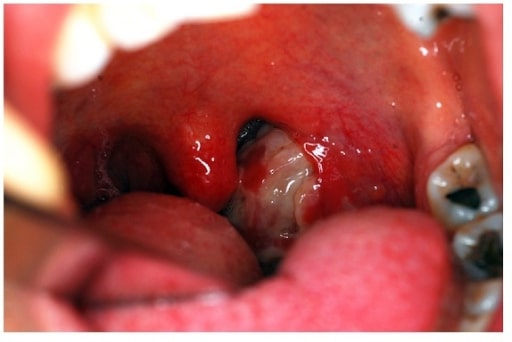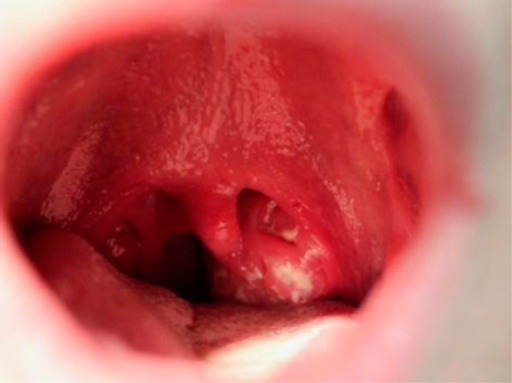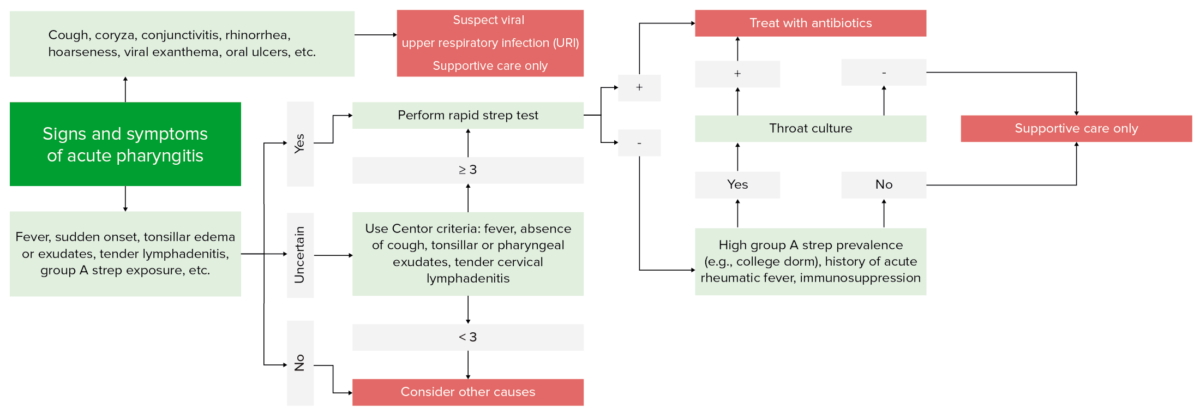Pharyngitis is an inflammation Inflammation Inflammation is a complex set of responses to infection and injury involving leukocytes as the principal cellular mediators in the body's defense against pathogenic organisms. Inflammation is also seen as a response to tissue injury in the process of wound healing. The 5 cardinal signs of inflammation are pain, heat, redness, swelling, and loss of function. Inflammation of the back of the throat Throat The pharynx is a component of the digestive system that lies posterior to the nasal cavity, oral cavity, and larynx. The pharynx can be divided into the oropharynx, nasopharynx, and laryngopharynx. Pharyngeal muscles play an integral role in vital processes such as breathing, swallowing, and speaking. Pharynx: Anatomy ( pharynx Pharynx The pharynx is a component of the digestive system that lies posterior to the nasal cavity, oral cavity, and larynx. The pharynx can be divided into the oropharynx, nasopharynx, and laryngopharynx. Pharyngeal muscles play an integral role in vital processes such as breathing, swallowing, and speaking. Pharynx: Anatomy). Pharyngitis is usually caused by an upper respiratory tract infection, which is viral in most cases. It typically results in a sore throat Throat The pharynx is a component of the digestive system that lies posterior to the nasal cavity, oral cavity, and larynx. The pharynx can be divided into the oropharynx, nasopharynx, and laryngopharynx. Pharyngeal muscles play an integral role in vital processes such as breathing, swallowing, and speaking. Pharynx: Anatomy and fever Fever Fever is defined as a measured body temperature of at least 38°C (100.4°F). Fever is caused by circulating endogenous and/or exogenous pyrogens that increase levels of prostaglandin E2 in the hypothalamus. Fever is commonly associated with chills, rigors, sweating, and flushing of the skin. Fever. Other symptoms may include a runny nose Nose The nose is the human body's primary organ of smell and functions as part of the upper respiratory system. The nose may be best known for inhaling oxygen and exhaling carbon dioxide, but it also contributes to other important functions, such as tasting. The anatomy of the nose can be divided into the external nose and the nasal cavity. Nose Anatomy (External & Internal), cough, headache Headache The symptom of pain in the cranial region. It may be an isolated benign occurrence or manifestation of a wide variety of headache disorders. Brain Abscess, and hoarseness Hoarseness An unnaturally deep or rough quality of voice. Parapharyngeal Abscess. Determining the causative agent based on symptoms alone is difficult. Thus, a throat Throat The pharynx is a component of the digestive system that lies posterior to the nasal cavity, oral cavity, and larynx. The pharynx can be divided into the oropharynx, nasopharynx, and laryngopharynx. Pharyngeal muscles play an integral role in vital processes such as breathing, swallowing, and speaking. Pharynx: Anatomy swab is often performed to rule out a bacterial cause. The mainstay of treatment is symptomatic and supportive, with bacterial causes requiring antibiotics.
Last updated: May 16, 2024
Pharyngitis is defined as inflammation Inflammation Inflammation is a complex set of responses to infection and injury involving leukocytes as the principal cellular mediators in the body’s defense against pathogenic organisms. Inflammation is also seen as a response to tissue injury in the process of wound healing. The 5 cardinal signs of inflammation are pain, heat, redness, swelling, and loss of function. Inflammation of the pharynx Pharynx The pharynx is a component of the digestive system that lies posterior to the nasal cavity, oral cavity, and larynx. The pharynx can be divided into the oropharynx, nasopharynx, and laryngopharynx. Pharyngeal muscles play an integral role in vital processes such as breathing, swallowing, and speaking. Pharynx: Anatomy and surrounding structures.
Most cases are due to an infectious organism acquired from close contact with an infected individual.

Pharyngitis leads to swollen lymph nodes and inflamed tonsils with white patches of pus as seen here. These clinical manifestations result in significant throat discomfort, pain when swallowing, and a hoarse voice.
Image: “Streptococcal pharyngitis” by RescueFF. License: Public Domain.
Chlamydia trachomatis tonsillopharyngitis. There is generalized pharyngeal and tonsillar hyperemia with diffuse purulent exudate on the left tonsil and swollen anterior pillars and uvula.
Image: “Chlamydia trachomatis tonsillopharyngitis” by Department of Otorhinolaryngology and Head and Neck Surgery, School of Medicine, Istanbul Medipol University, 34718 Istanbul, Turkey. License: CC BY 3.0
Pharyngitis demonstrating exudative tonsillitis and an enlarged uvula in an adolescent patient 5 days after the onset of infectious mononucleosis.
Image: “Infectious mononucleosis” by University of Minnesota Medical School , Minneapolis, MN, USA. License: CC BY 4.0Centor score: estimates the probability Probability Probability is a mathematical tool used to study randomness and provide predictions about the likelihood of something happening. There are several basic rules of probability that can be used to help determine the probability of multiple events happening together, separately, or sequentially. Basics of Probability that pharyngitis is streptococcal and suggests management course for adults
Laboratory diagnosis:
Identification Identification Defense Mechanisms of beta-hemolytic streptococcal infection is of paramount importance as it is associated with the development of rheumatic heart disease Rheumatic Heart Disease Cardiac manifestation of systemic rheumatological conditions, such as rheumatic fever. Rheumatic heart disease can involve any part the heart, most often the heart valves and the endocardium. Rheumatic Fever if left untreated.

Diagnostic algorithm for pharyngitis
Image by Lecturio.To recall the Centor criteria, remember:
The following conditions are differential diagnoses of pharyngitis: